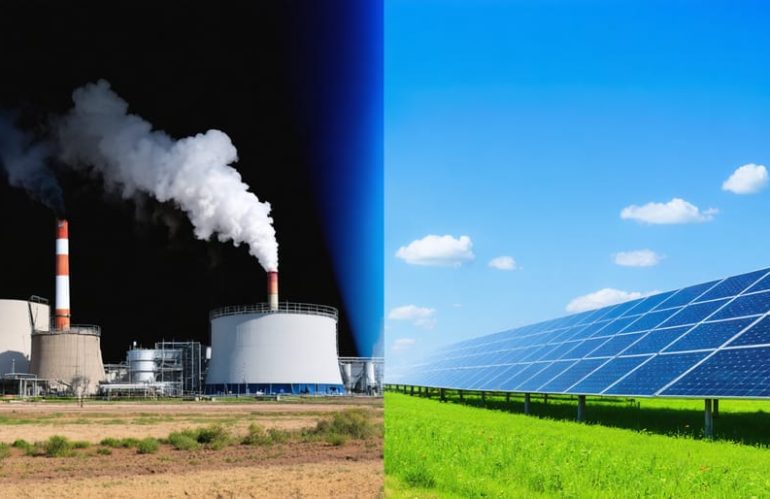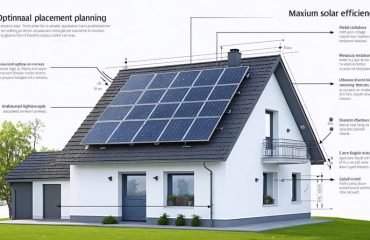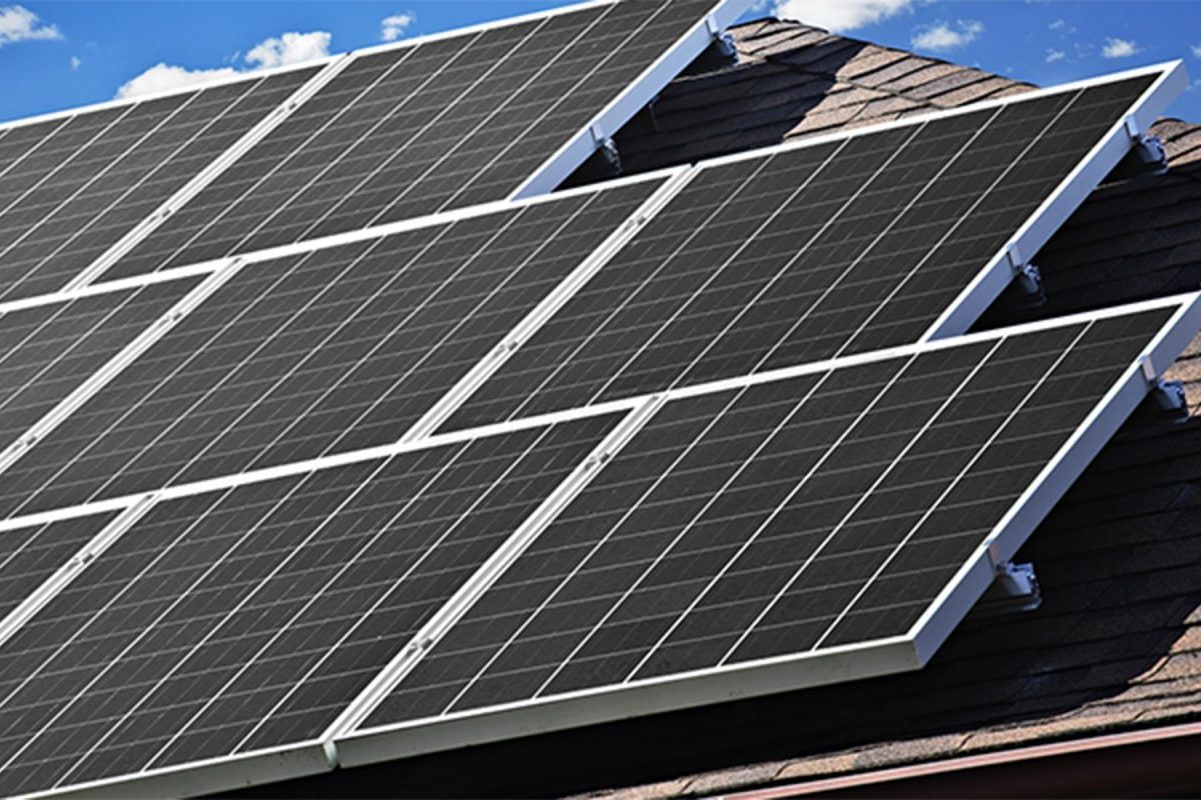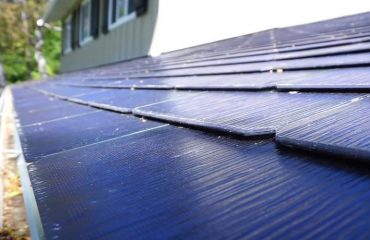Solar energy stands as one of the most transformative solutions in our fight against climate change, offering amazing environmental benefits of solar energy that extend far beyond simple power generation. Every kilowatt-hour of solar electricity prevents approximately 1.5 pounds of carbon dioxide from entering our atmosphere, effectively reducing the greenhouse gas emissions that drive global warming. Unlike fossil fuels, solar power creates clean, renewable energy without depleting natural resources or producing harmful pollutants that contaminate our air and water supplies. For homeowners and businesses alike, switching to solar not only shrinks their carbon footprint but also contributes to energy independence and a more sustainable future. As solar technology continues to advance and become more accessible, its role in protecting our environment becomes increasingly crucial, offering a practical solution that combines environmental stewardship with economic benefits.
Reducing Carbon Footprint: The Direct Environmental Impact
The Carbon Offset Advantage
A typical residential solar system can prevent approximately 5-7 metric tons of carbon dioxide emissions annually – equivalent to taking 1.5 cars off the road each year. For perspective, this is roughly the same as planting 100 trees and letting them grow for 10 years. Over a 25-year lifespan, a single home solar installation can offset up to 175 metric tons of CO2.
The impact becomes even more significant when considering neighborhood-wide adoption. A community of 100 homes with solar panels can collectively prevent 500-700 metric tons of CO2 emissions each year, comparable to preserving 600 acres of forest. These carbon offset benefits begin immediately after installation and continue throughout the system’s lifetime.
Beyond carbon dioxide, solar energy also helps reduce other harmful emissions. A standard home solar setup prevents the release of approximately 5,000 pounds of sulfur dioxide and 8,000 pounds of nitrogen oxides over its lifetime. These reductions in greenhouse gases and air pollutants contribute significantly to cleaner air and a healthier environment for future generations.
Clean Energy vs. Fossil Fuels
When comparing clean energy sources like solar to traditional fossil fuels, the environmental benefits become crystal clear. While fossil fuels release harmful greenhouse gases during combustion, solar panels generate electricity without producing any direct emissions. The latest solar panel technology has made this clean energy option even more efficient and environmentally friendly.
Consider this: a typical home solar system can offset about 100,000 pounds of carbon dioxide over its lifetime – equivalent to planting over 1,000 trees. Unlike coal and natural gas power plants, solar installations don’t require water for cooling, helping preserve our precious water resources. They also don’t create air pollutants that contribute to respiratory issues or acid rain.
While fossil fuels deplete finite natural resources and leave lasting environmental damage through mining and drilling, solar energy harnesses an unlimited, clean power source. The environmental impact of manufacturing solar panels is typically offset within just 1-4 years of operation, after which they continue providing clean energy for decades with minimal maintenance.

Conserving Natural Resources
Water Conservation Benefits
Solar energy not only reduces carbon emissions but also plays a crucial role in water conservation. Traditional power plants, particularly those using coal or nuclear energy, require massive amounts of water for cooling and generating electricity. In fact, thermoelectric power plants account for about 41% of all freshwater withdrawals in the United States. Solar panels, by contrast, need virtually no water to generate electricity, using only occasional cleaning to maintain peak efficiency.
A typical coal power plant uses approximately 20,000 gallons of water per megawatt-hour of electricity generated. Solar panels require just a fraction of that amount – mainly for occasional cleaning – saving millions of gallons of water annually. This makes solar energy particularly valuable in drought-prone regions where water conservation is critical.
By choosing solar power, homeowners contribute to preserving local water resources while maintaining reliable energy production. This water-saving benefit becomes increasingly important as communities face growing water scarcity challenges.
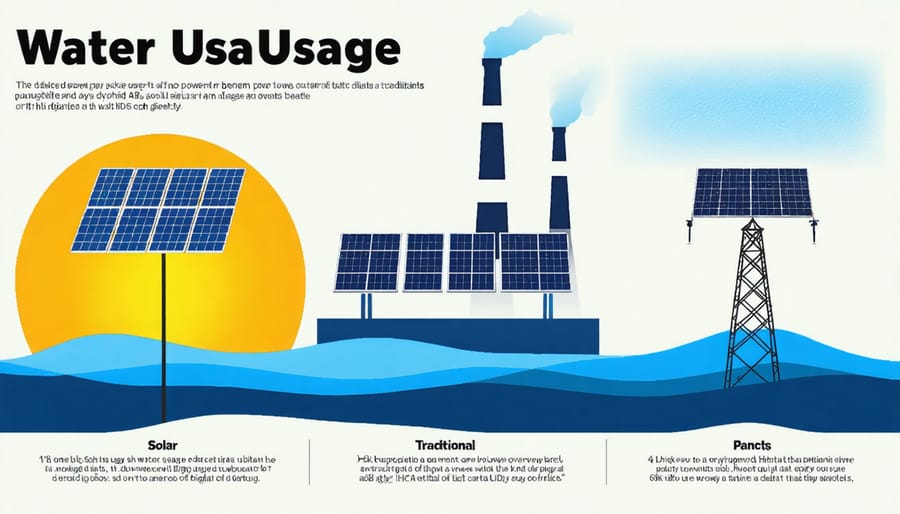
Land Use Advantages
One of solar energy’s most significant advantages is its efficient use of existing space. Unlike traditional power plants that require dedicated land, solar panels can be installed on otherwise unused rooftop areas. This dual-use approach means homeowners can generate clean energy without sacrificing valuable ground space. A typical residential rooftop solar system can generate enough electricity to power a home while preserving gardens, yards, and natural habitats below.
Modern solar installations are particularly space-efficient in urban environments, where they transform vacant roof space into productive energy-generating zones. This approach helps preserve natural landscapes and agricultural land that might otherwise be used for energy production. Additionally, solar carports and canopies can turn parking lots into power stations, maximizing space utility while providing shade and weather protection.
The versatility of solar installation locations means we can generate substantial clean energy without expanding our environmental footprint, making it a truly sustainable solution for our energy needs.
Long-Term Environmental Benefits
Air Quality Improvements
Solar energy plays a vital role in improving local air quality by reducing our dependence on fossil fuel-based power plants. When communities switch to solar power, they significantly decrease the emission of harmful pollutants like sulfur dioxide, nitrogen oxides, and particulate matter that typically come from burning coal or natural gas.
Unlike traditional power plants, solar panels generate electricity without releasing any air pollutants during operation. This clean energy production helps create healthier communities by reducing smog, acid rain, and other air quality issues that can trigger respiratory problems and other health concerns.
The air quality benefits of solar energy are particularly noticeable in urban areas, where air pollution from power plants often combines with vehicle emissions to create dangerous smog conditions. By installing solar panels, homeowners contribute to cleaner air in their neighborhoods and help reduce the formation of ground-level ozone, a major component of urban smog.
Studies have shown that regions with higher solar adoption rates experience measurable improvements in air quality, leading to better health outcomes for residents, especially children and seniors who are most vulnerable to air pollution.
Ecosystem Protection
Solar energy installations contribute significantly to protecting local ecosystems and preserving biodiversity. Unlike traditional power plants that require extensive land clearing and habitat disruption, solar panels can be installed on existing structures like rooftops and parking lots, minimizing their impact on natural habitats.
When solar farms are built on previously disturbed land or in desert areas, they can actually create new wildlife corridors and safe havens for local species. The shade provided by solar panels can help maintain soil moisture and create microhabitats for small animals and plants. Many solar installations incorporate native vegetation around and between panels, which supports local pollinators and provides shelter for wildlife.
Additionally, solar energy doesn’t produce air pollutants or require water for cooling like conventional power plants, protecting both air quality and water resources that local flora and fauna depend on. This means cleaner air for birds and insects, and more water available in natural waterways for aquatic life. Some solar facilities even become designated wildlife sanctuaries, demonstrating how renewable energy and nature conservation can work hand in hand.
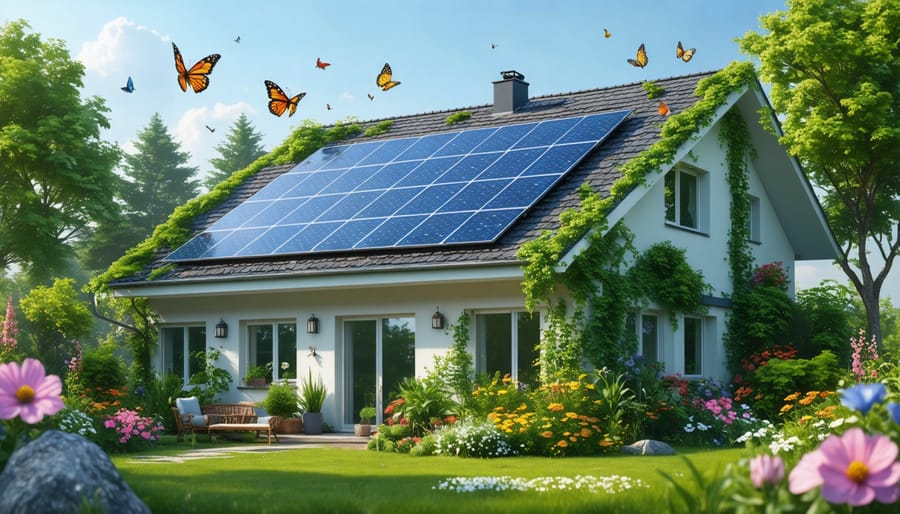
Your Solar Impact: Making a Difference at Home
Making a difference in environmental conservation doesn’t always require grand gestures. By installing solar panels on your home, you can create a significant positive impact on the environment while enjoying substantial personal benefits. Let’s explore how your decision to go solar can contribute to a healthier planet.
First, a typical residential solar system can offset about 100,000 pounds of carbon dioxide over its lifetime – equivalent to planting over 1,000 trees. When you install solar panels, you’re essentially creating your own clean power plant right on your roof. This reduces your reliance on fossil fuels and helps combat climate change at a local level.
Your solar installation can also inspire neighbors and create a ripple effect in your community. Studies show that solar installations often cluster in neighborhoods, as people become more familiar with the technology through their neighbors’ experiences. By taking the lead, you become part of a growing movement toward sustainable living.
Water conservation is another significant benefit of your solar installation. Unlike traditional power plants that require massive amounts of water for cooling, solar panels need minimal water for occasional cleaning. A single home’s switch to solar can save thousands of gallons of water annually.
The environmental benefits extend beyond your immediate surroundings. Solar panels reduce the need for new power plants and transmission lines, helping preserve natural habitats and wildlife. They also decrease air pollution, leading to better air quality in your community and reduced respiratory health issues.
Getting started with solar is easier than ever, thanks to affordable solar financing options and improved technology. Modern solar panels are more efficient and durable than ever, providing reliable clean energy for 25-30 years or more.
By monitoring your solar system’s performance through user-friendly apps, you can track your environmental impact in real-time. This visibility helps you understand exactly how your investment benefits the planet while motivating you to optimize your energy usage for maximum environmental benefit.
Remember, every kilowatt-hour of solar energy you generate is one less unit of fossil fuel-based electricity needed from the grid. Your individual choice to go solar creates a lasting positive impact on the environment that compounds over time, making you an active participant in the solution to climate change.
Solar energy stands as a powerful solution in our fight against climate change and environmental degradation. By harnessing the sun’s power, we can significantly reduce greenhouse gas emissions, preserve water resources, and minimize our dependence on fossil fuels. The environmental benefits are clear: cleaner air, reduced carbon footprint, and a more sustainable future for generations to come. As a homeowner, your decision to switch to solar power creates a ripple effect that extends far beyond your property lines. By investing in solar panels today, you’re not just cutting your energy bills – you’re actively contributing to a cleaner, healthier planet. Take the first step toward environmental stewardship by exploring solar options for your home. The Earth’s future is bright when we choose to power it with sunshine.

